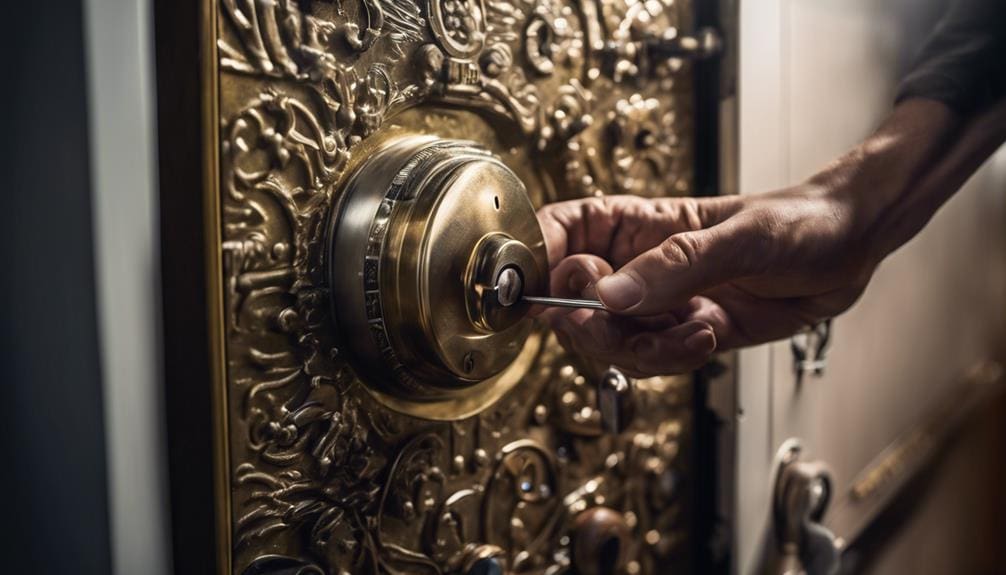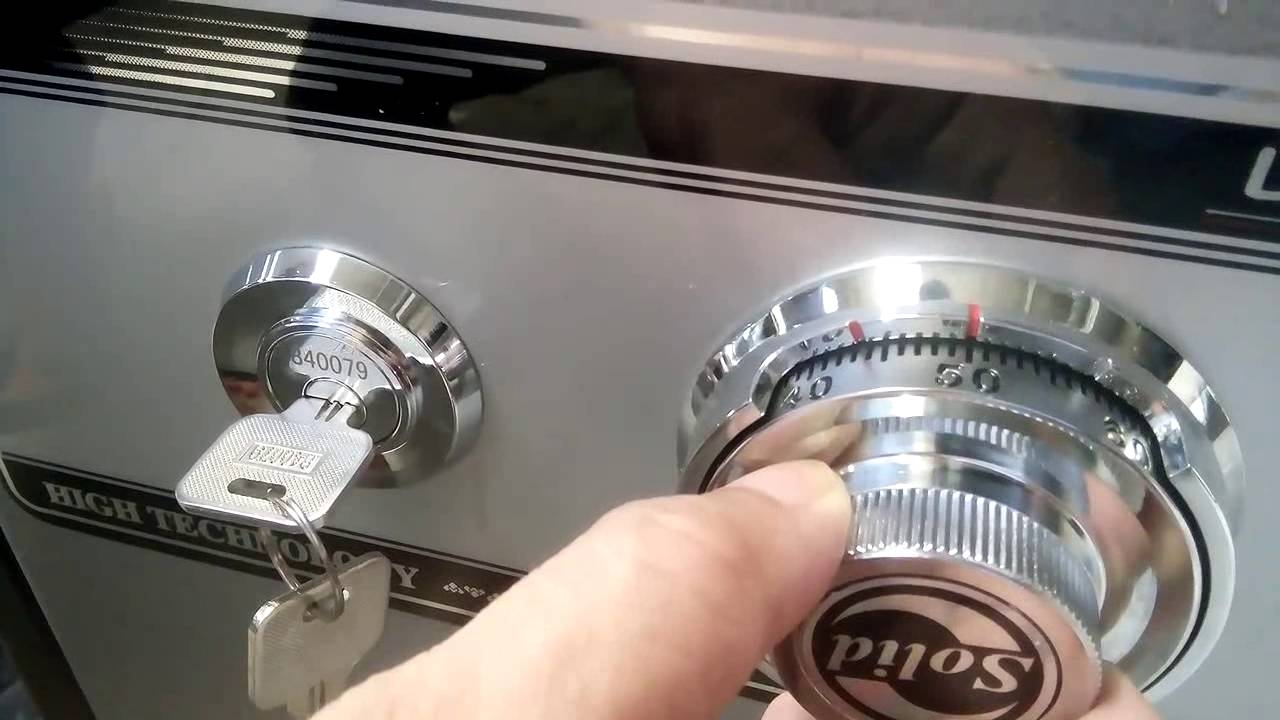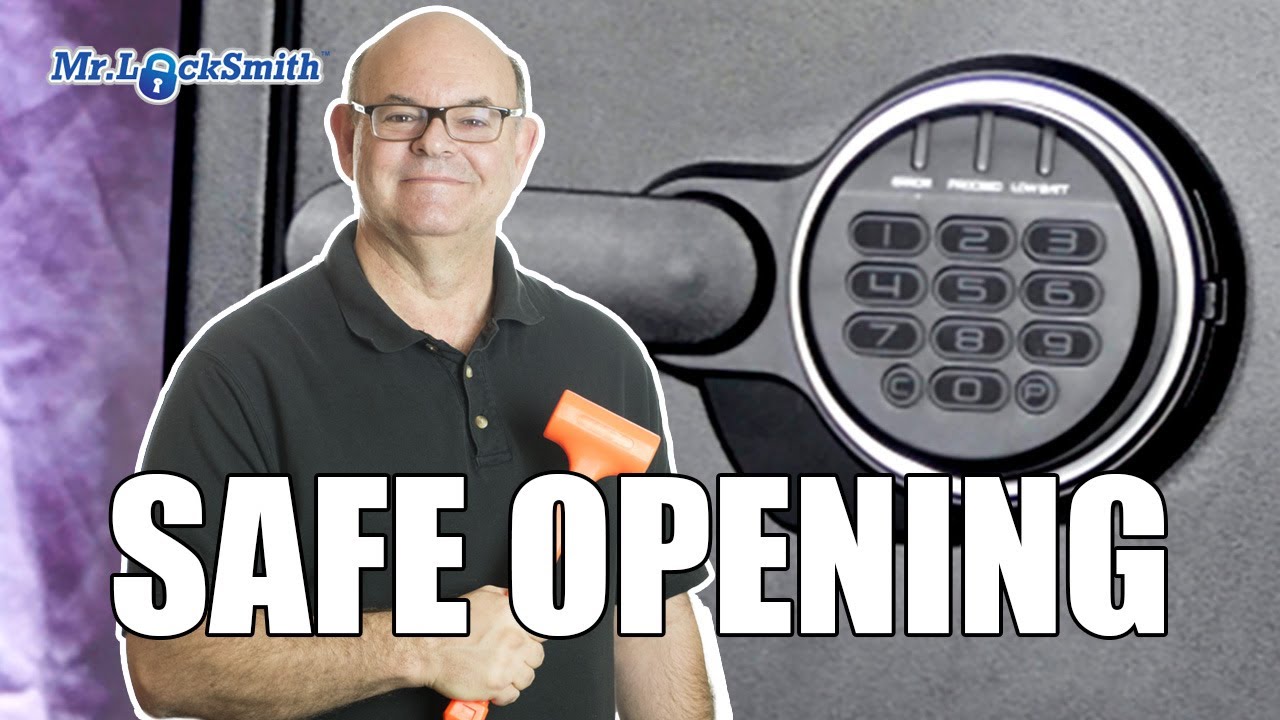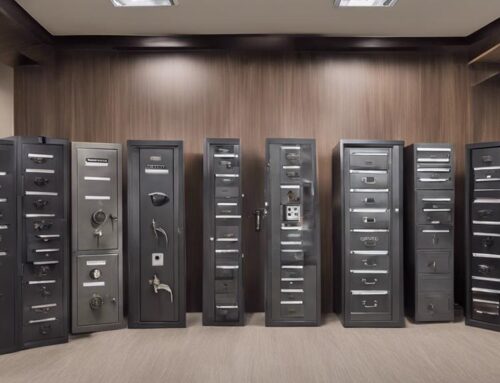Opening a safe without a key begins with some DIY methods like lock picking, where you use paper clips to manipulate the pins inside the lock. Alternatively, a rare earth magnet can activate the lock’s internal release mechanism. For combination safes, try manipulation by sensing for subtle clicks and movements. Everyday tools like nail files or magnets can push or reset internal components. If DIY doesn’t work or you’re uncertain, hiring a locksmith who uses specialized tools guarantees a secure and efficient opening. Be cautious of the safe type and legal considerations. Explore more methods to address various safe mechanisms.
Key Takeaways
- Use a paperclip to pick the lock by manipulating the internal pins.
- Employ a rare earth magnet to trigger the lock’s solenoid in electronic safes.
- Straighten a nail file to push pins inside the lock mechanism.
- Engage a professional locksmith for expert, damage-free safe opening.
- Confirm legal ownership and authorization before attempting to unlock any safe.
Common DIY Techniques
When you’re looking to open a safe without a key, familiarizing yourself with common DIY techniques like lock picking, bypassing, and manipulation is essential. Understanding these methods can help you open the safe without causing significant damage.
First, lock picking is a classic technique. You can use simple tools like a paper clip to manipulate the pins inside the lock, mimicking the action of a key. Insert the paper clip into the keyhole and gently adjust until the lock reveals.
Bypassing is another effective method. This involves using tools like a rare earth magnet to interact with the locking mechanism directly. Magnets can sometimes trigger the lock’s internal release mechanism, allowing you to access the safe without a key.
Manipulation, often used for combination safes, involves feeling for the subtle clicks and movements inside the lock. By carefully turning the dial and listening for these cues, you can deduce the correct combination and open up the safe.
While these techniques require patience and a steady hand, they offer viable solutions for opening a safe without a key. Always approach these methods with caution to avoid irreparable damage to the safe.
Using Everyday Tools
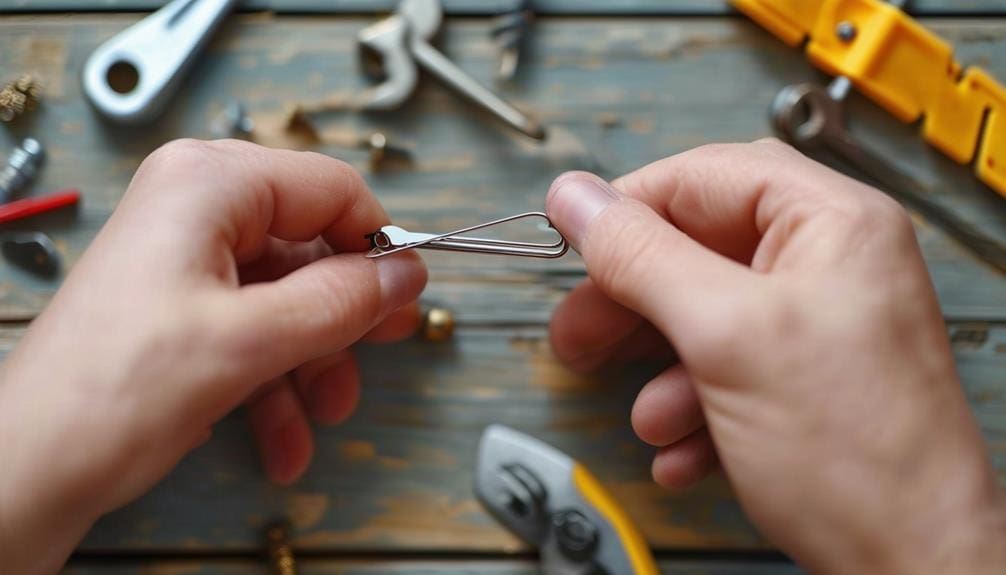
In addition to common DIY techniques, employing everyday tools like paperclips, nail files, and magnets can also provide practical solutions for accessing a safe without a key. To start, you can use a paperclip to pick the mechanism. Straighten the paperclip, insert it through the keyhole, and gently manipulate it while listening for a click that indicates the pins are aligned.
Nail files work similarly in opening safes. Insert the tip of the nail file into the keyhole, push the pins inside the mechanism, and rotate the file to trigger the opening. This method requires patience and a steady hand.
For electronic safes, rare earth magnets can be surprisingly effective. These powerful magnets can reset the solenoid within the mechanism, allowing you to access the safe without a key. Simply place the magnet close to the locking area and wait for the mechanism to disengage.
Another method is bouncing or slamming a safe. By applying a sharp force from a distance, you may override the mechanism and open the door. As a last resort, drilling a small hole into the safe near the locking mechanism can provide access, enabling you to manipulate it directly.
Professional Locksmith Services
Professional locksmith services offer a reliable and expert solution for accessing safes without a key, using specialized tools and techniques to guarantee minimal harm. When you’re faced with a locked safe, a professional locksmith can evaluate the situation and determine the best course of action based on your specific safe type. Different types of safes require varied safe locksmith techniques, and these experts are trained to handle them all.
First, a locksmith will assess your safe to understand its model and mechanism. This step is vital because it informs the specific tools and methods they’ll use to open the safe. They might employ alternative methods like lock picking, safe manipulation, or even drilling in extreme cases. However, their priority is always to minimize any potential harm to the safe.
Hiring a professional locksmith ensures that you gain access to your safe efficiently and securely. If DIY methods have failed, it’s time to contemplate this expert assistance. Remember, the costs and factors involved will vary, especially for high-security or emergency situations, but the investment guarantees the integrity of your safe is preserved. This professional approach provides peace of mind, knowing you’re in capable hands.
Safe Types and Mechanisms
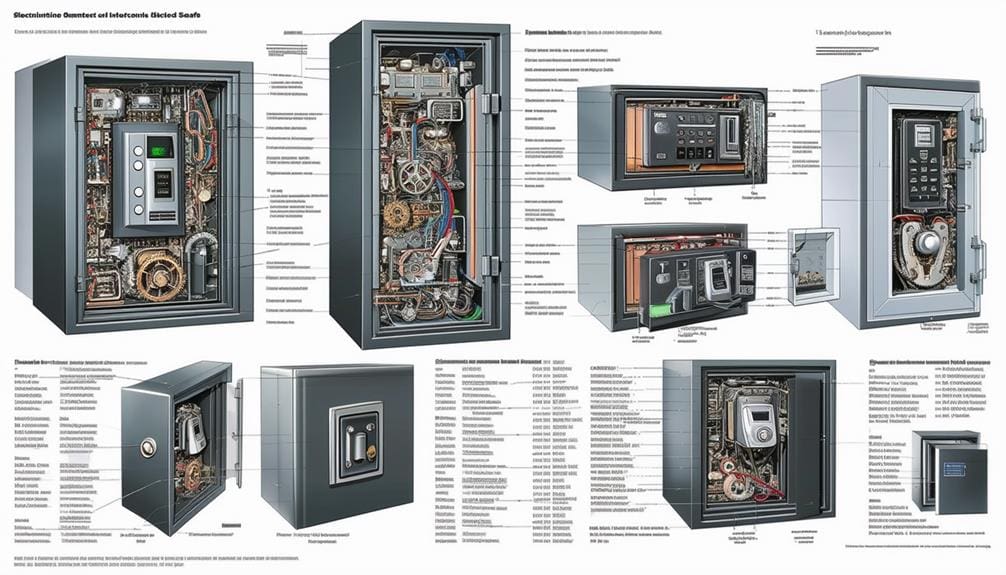
Understanding the different types of safes and their mechanisms is essential for successfully opening them without a key. Safes are categorized into key safes, combination safes, electronic safes, and biometric safes, each with unique locking mechanisms.
Key safes rely on traditional mechanical locks, requiring a physical key to open. Mastering the mechanics of these locks involves understanding the pin and tumbler system. Combination safes, on the other hand, use a numeric code. You’ll need to manipulate the dial to align the internal wheels and release the lock.
Electronic safes employ digital keypads and digital circuits. To access these, you must understand the keypad input system and how the digital circuits control the locking mechanism. In some cases, overriding the circuit board can be a method, though it requires technical knowledge.
Biometric safes offer the highest level of security by using fingerprints or other biometric data for authentication. These locks are sophisticated, integrating advanced digital circuits with biometric scanners. To bypass these, you’d need a deep understanding of biometric data storage and the safe’s digital security protocols.
Knowing the specific locking mechanisms of each safe type is critical for opening them without a key, ensuring you approach each with the right techniques.
Legal and Safety Considerations
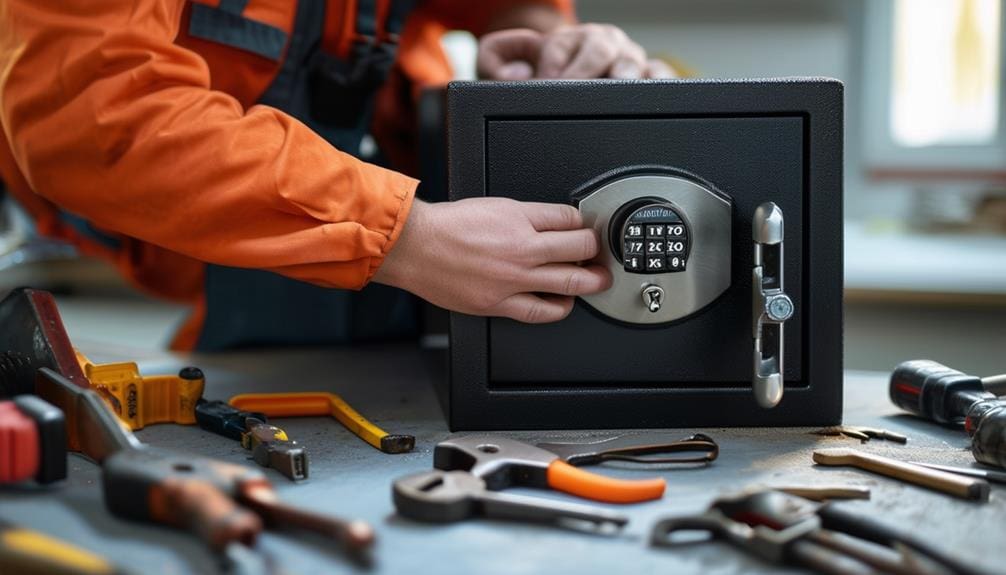
Before attempting to access a safe without a key, make sure you’re legally authorized to do so to avoid potential legal complications. Verify your legal ownership to prevent any unauthorized entry, which can lead to significant legal implications. Always adhere to ethical standards, especially in situations involving shared ownership or legal restrictions.
When you’re ready to proceed, prioritize safety by wearing appropriate protective gear. This minimizes the risk of injury and supports effective damage prevention during the opening process. Safety precautions are essential to guarantee that both you and the safe remain unharmed.
Engaging a professional locksmith is highly recommended. They possess the expertise and tools needed to access a safe without causing unnecessary damage. Professional assistance not only ensures the opening process is done correctly but also upholds ethical standards and legal requirements.
Preventive Measures
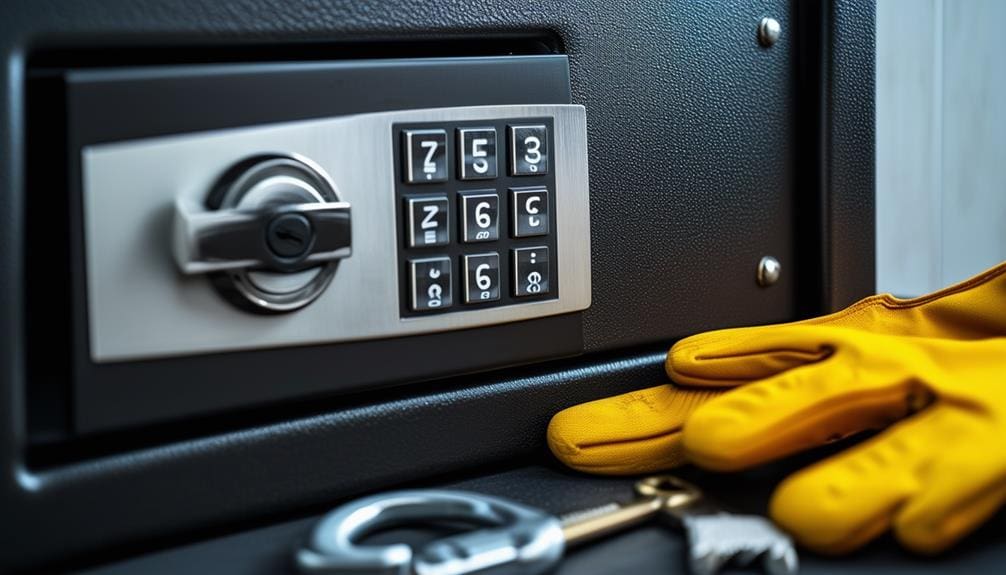
To sidestep future issues with safe access, create duplicate keys and store them in a secure location. Key duplication guarantees you have a backup if the original is lost or damaged. Secure storage, such as a locked drawer or a secondary safe, helps prevent misplacement or theft.
Investing in key tracking devices as an additional security measure can help you locate your safe key if it goes missing. These devices use GPS or Bluetooth to track the key’s location, offering quick recovery. Consider keyless safes for convenience and enhanced security, as they eliminate the need for physical keys altogether.
Implement proactive measures like regular audits and key maintenance to minimize the risk of key loss. Conducting regular audits involves checking key availability and condition, ensuring they’re always accounted for. Key maintenance includes keeping the keys clean and functional, reducing wear and tear that could lead to breakage.
Enhance key security by storing duplicates in different locations, reducing the risk of total loss. Theft prevention is essential, so avoid labeling keys in a way that reveals their purpose. By following these steps, you can guarantee consistent and secure safe access.
Frequently Asked Questions
How to Open a Safe That Is Locked Without a Key?
To open a locked safe without a key, consider safe manipulation or lock picking. You might use safe drilling as a last resort. Locksmith services offer non-destructive entry methods, including digital keypad hacking, safe cracking techniques, and emergency safe opening.
What Do I Do if I Lost the Key to My Safe?
If you’ve lost your safe key, contact a professional for safe locksmith services. They’ll use safe cracking techniques, lock picking methods, or the safe drilling process. Avoid DIY; professionals have safe opening tools and provide key replacement options.
How to Open a Safe if You Forgot the Combination?
If you forgot the combination, you can try safe cracking techniques like safe manipulation methods or using a stethoscope. Safe drilling process, digital safe hacking, and safe override methods are also options. Consider professional help for complex safes.
Do Safes Have a Master Code?
Think of a master code as a skeleton key. Some safes have them for emergency access, but they can pose security risks. Master code protection is essential to prevent safe lock vulnerabilities and potential safe lock manipulation.
Conclusion
Opening a safe without a key is a challenging task that shouldn’t be taken lightly. You’ve learned about DIY techniques, everyday tools, and when to call in the professionals. Remember, tampering with a safe can be dangerous and illegal, so always proceed with caution and awareness. If you ever find yourself locked out, prevention is your best ally. Keep your keys secure, maintain records, and consider investing in a high-quality safe. Stay prepared, and you’ll stay secure.

